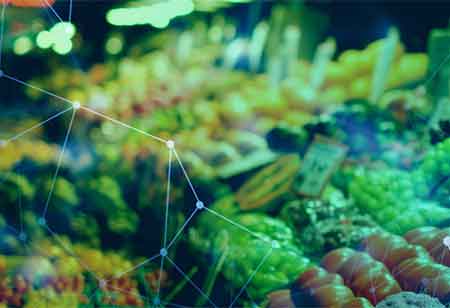Thank you for Subscribing to Food Business Review Weekly Brief
What Challenges Are Most Prominent in Alternative Protein Manufacturing?
Plant-based proteins are one of the more advanced alternative protein technologies, although they still face issues such as clean labeling, extensive processing, texture, flavor, and off-taste.

By
Food Business Review | Friday, August 30, 2024
Stay ahead of the industry with exclusive feature stories on the top companies, expert insights and the latest news delivered straight to your inbox. Subscribe today.

Plant-based proteins are one of the more advanced alternative protein technologies, although they still face issues such as clean labeling, extensive processing, texture, flavor, and off-taste.
Fremont, CA: An alternative protein is a plant-based, insect-based, or biotech protein that replaces conventional animal proteins. Alternative proteins include protein-rich seeds, grains, and plants that may be utilized as functional ingredients in various meals to improve texture, viscosity, emulsification, stability, foaming, and fat binding. Alternative proteins include microorganisms, insects, and laboratory-grown meat. Today, the goal is to manufacture competitive products regarding meat flavor and texture, sustainability, clean label, nutritional value, and animal welfare. Several obstacles come with such much potential. Here are five significant hurdles for alternative proteins.
Protein Extraction
Many firms in the plant-protein industry use protein extraction techniques to produce high-protein products. The difficulty here is to employ procedures that consume less electrical energy, water, and wastewater. Many businesses are actively seeking green solutions that enable them to substitute routinely used hazardous chemicals (e.g., hexane) with GRAS (Generally Recognized as Safe) solvents to make protein products with acceptable properties. Further research is required to ensure safe and cost-effective protein extraction technologies.
Taste and Texture
Customers demand a genuine experience beginning with the first taste and continuing throughout the meal. This is especially true for alternative proteins that attempt to emulate the flavor and texture of meat by giving a solid, cohesive, and juicy mouthfeel. Others (for example, dairy replacements) are more concerned with providing a taste experience that satisfies customers with creaminess or another feeling in the tongue. Regardless, many items in the category still suffer from off-taste and strange consistency. Getting this exactly right represents significant potential for alternative protein firms in the future.
Clean Label
"Clean label" is a significant objective for food technology, resulting in 'healthy' goods devoid of artificial chemicals and preservatives. Consumer awareness of clean-label products is increasing; they want ingredient lists that they can comprehend. The key to success will be simplicity. Products should have easily identifiable, brief, and understandable ingredient lists for clean labels and allergen advice.
Regulations
Many revolutionary inventions face regulatory hurdles, and alternative proteins are no exception. Companies frequently need to gain an understanding of this time-consuming and capital-intensive procedure. Fermentation technologies, for example, must comply with GMP (Good Manufacturing Practices) and CFR 211 (Code of Federal Regulations). However, regulation is very reliant on strain. Regarding cell-based meat, despite Eat Just's first cell-cultured meat entering Singaporean grocery shelves, regulators have yet to take significant measures to enable similar products in other parts of the world.
GMO
Genetically modified organisms (GMOs) are one of the most contentious regulatory issues in today's food systems. GMO labeling has greatly affected customer food purchasing decisions, particularly in European markets. Most studies believe that GMOs in foods are safe for human consumption and provide additional nutritional value and advantages. At the same time, many customers have unfavorable associations with GMOs on product labels. Consumers may see genetic alterations as contamination due to DNA intervention, causing them to avoid such items.






